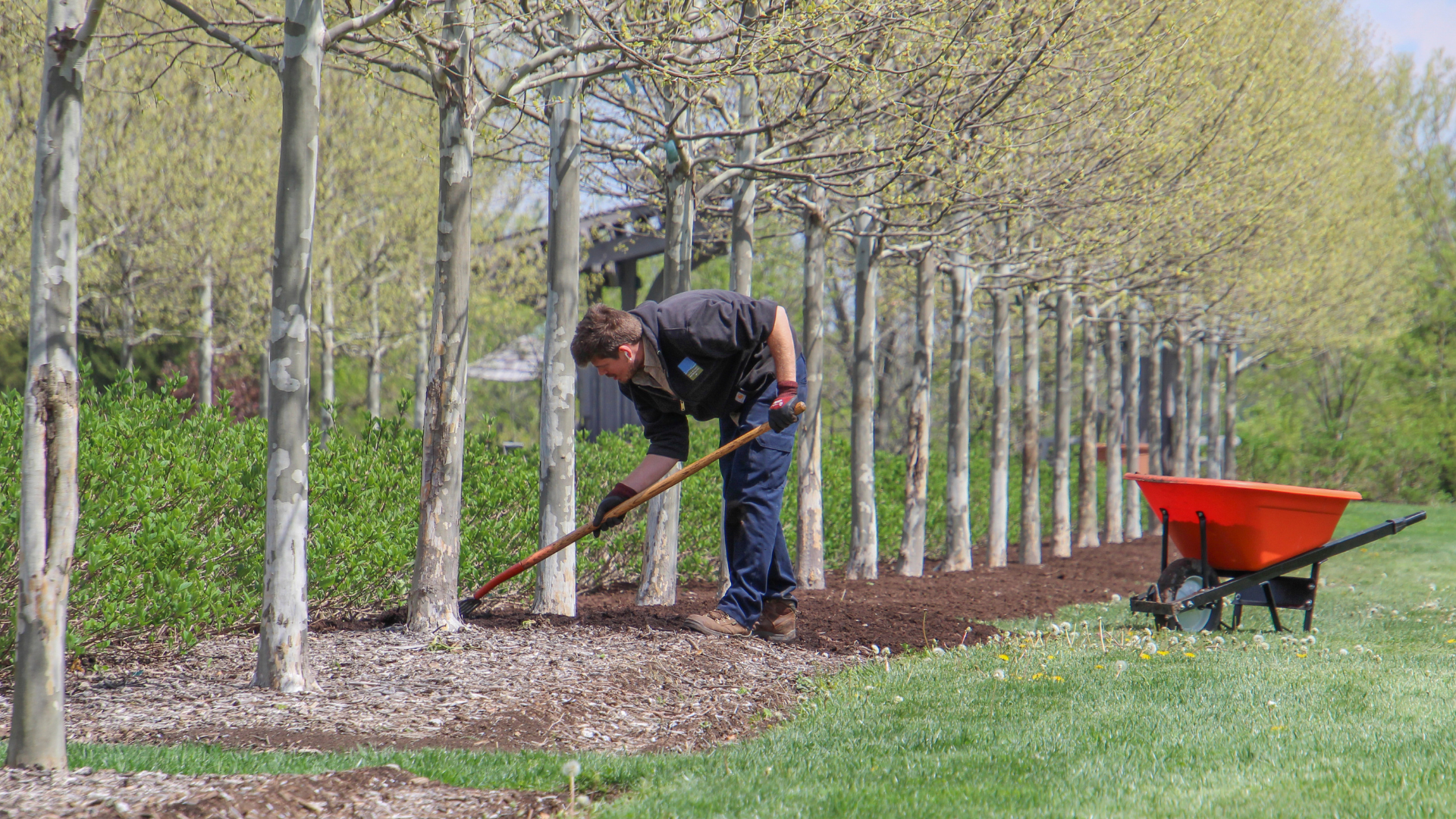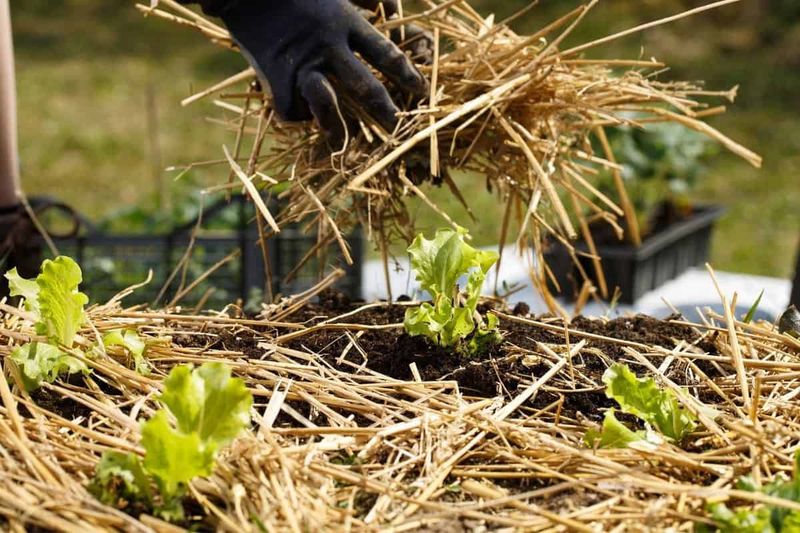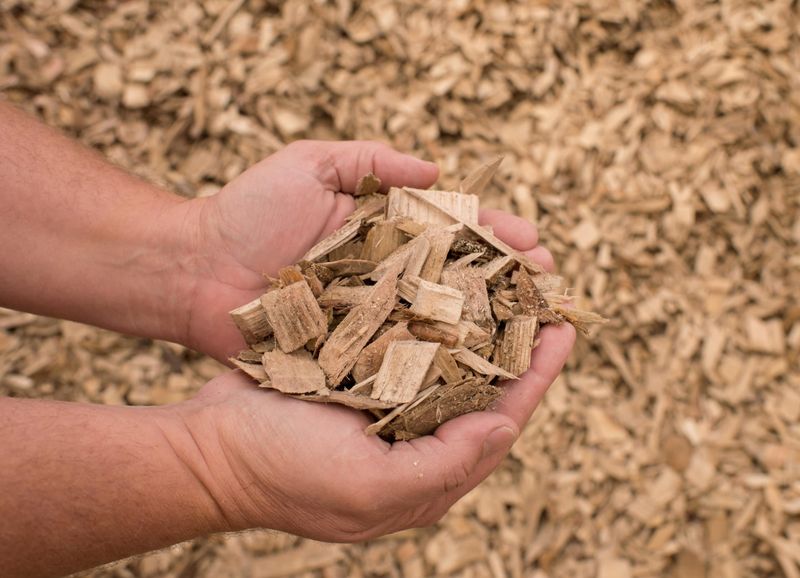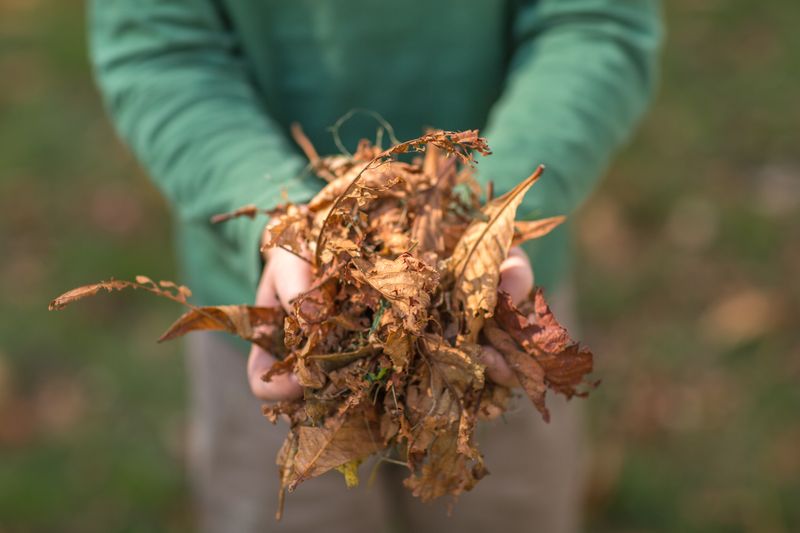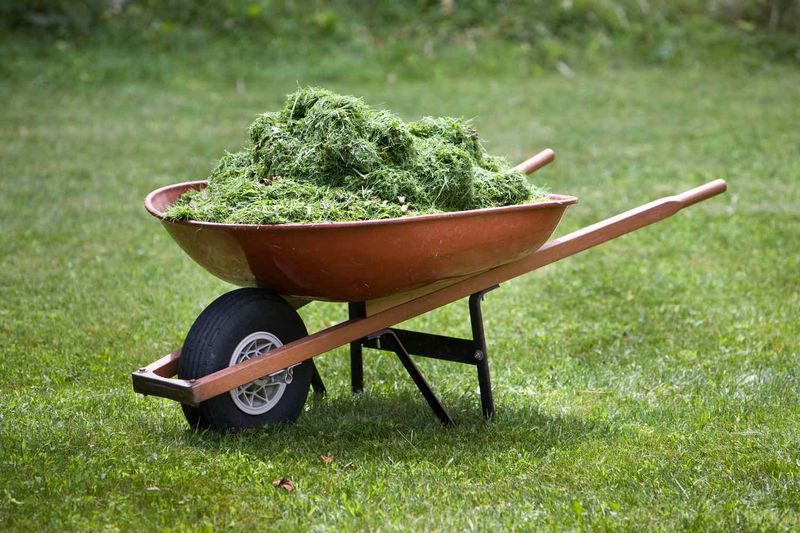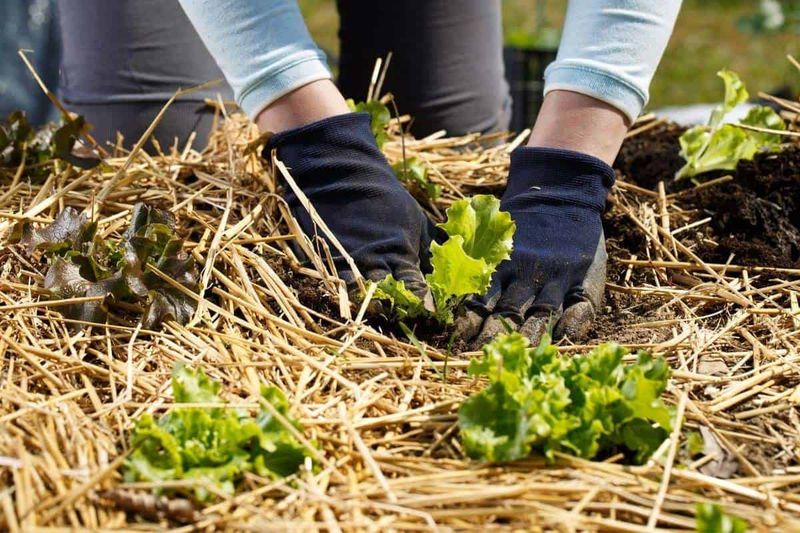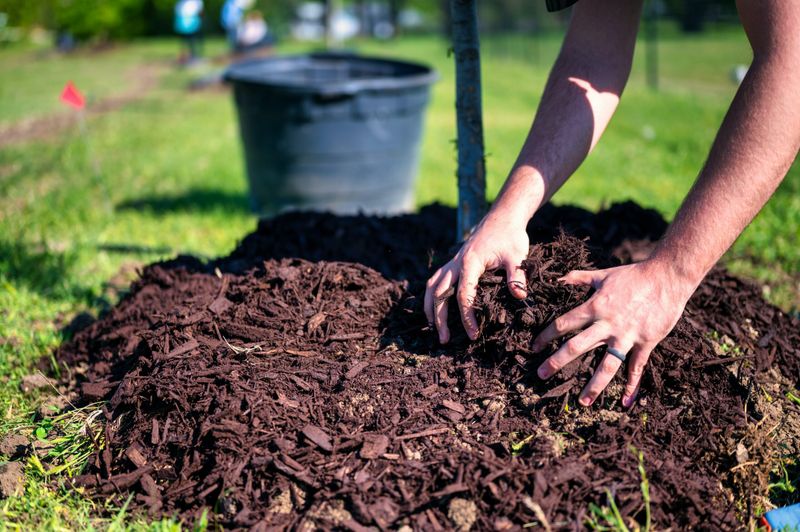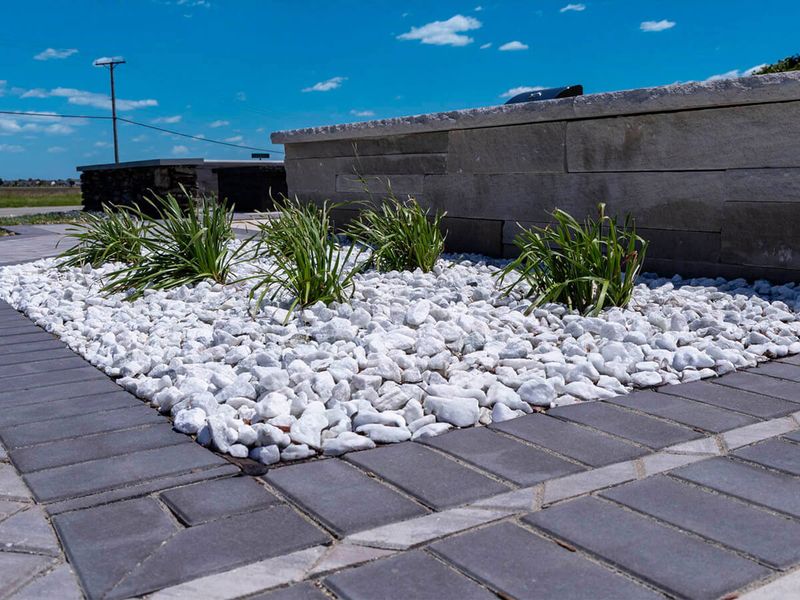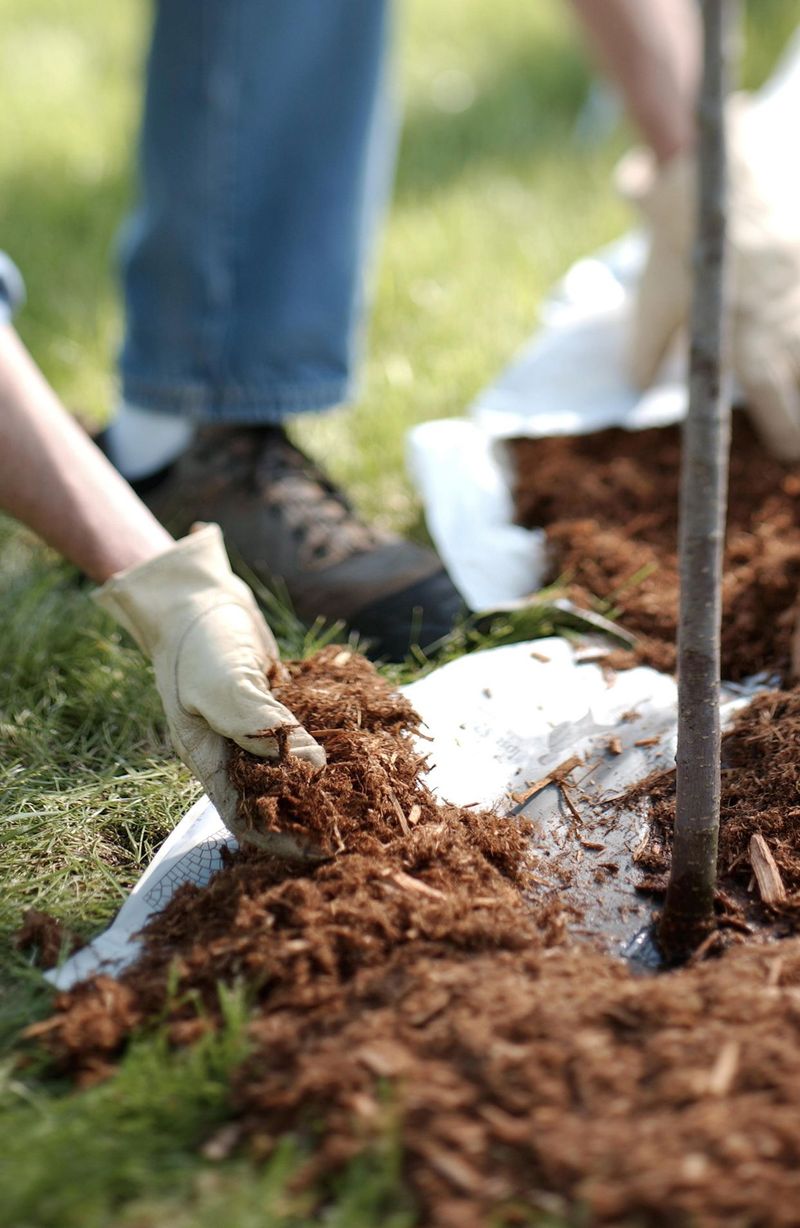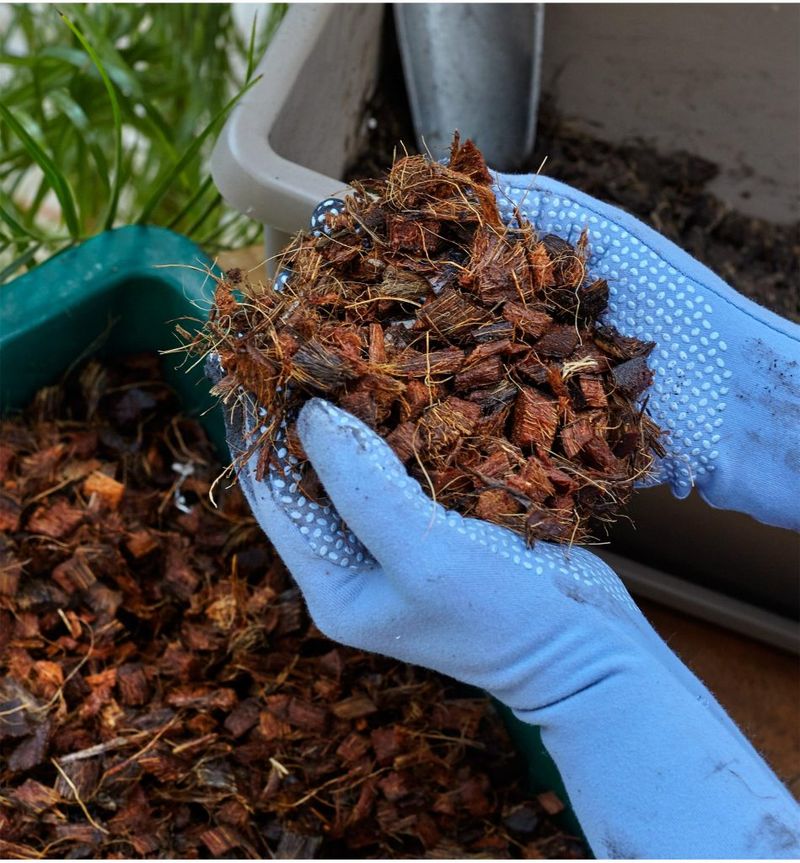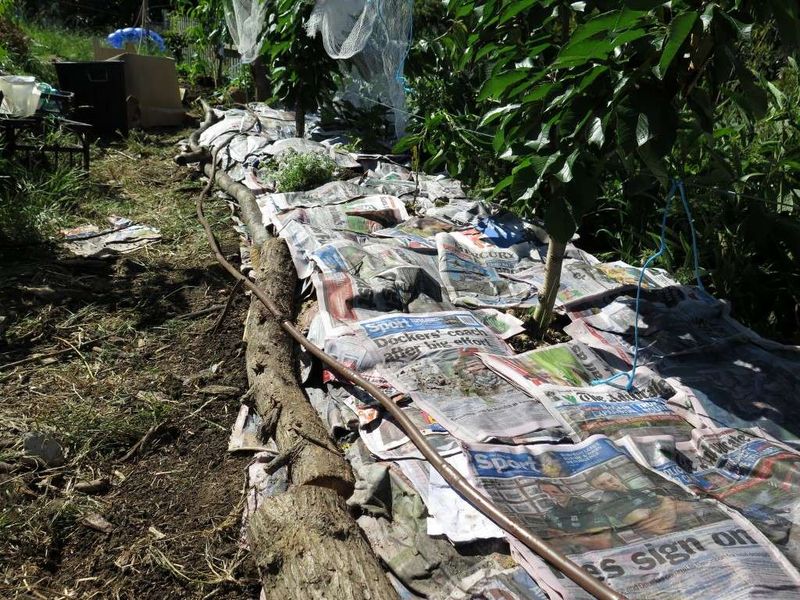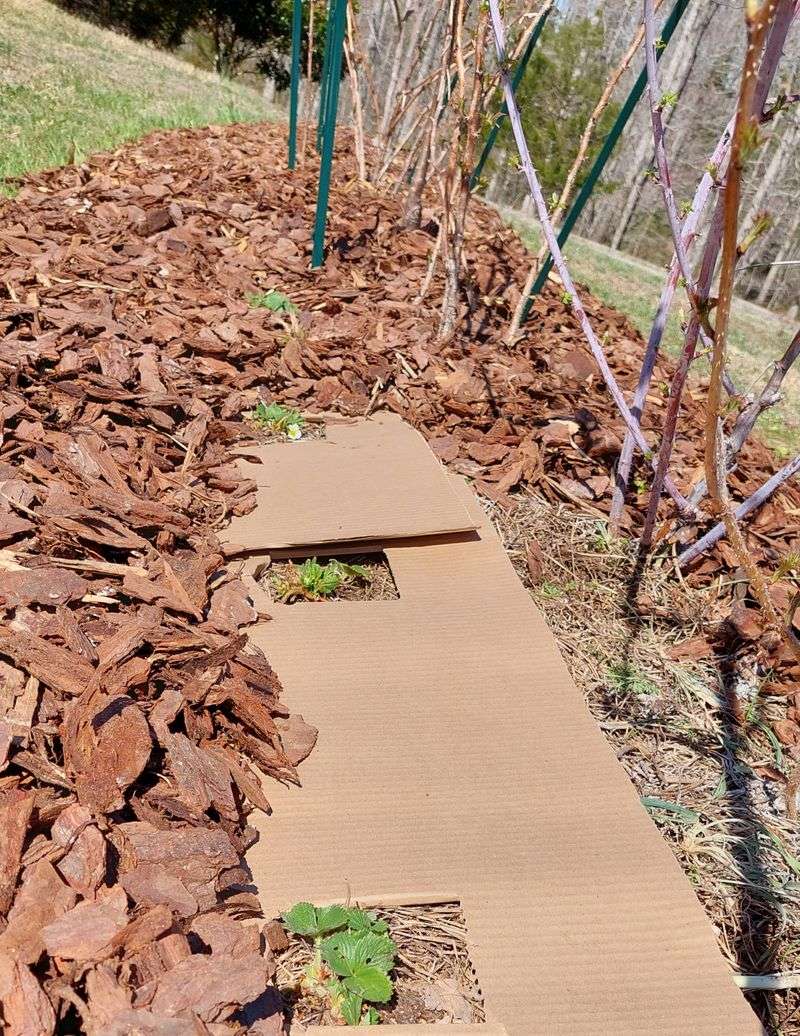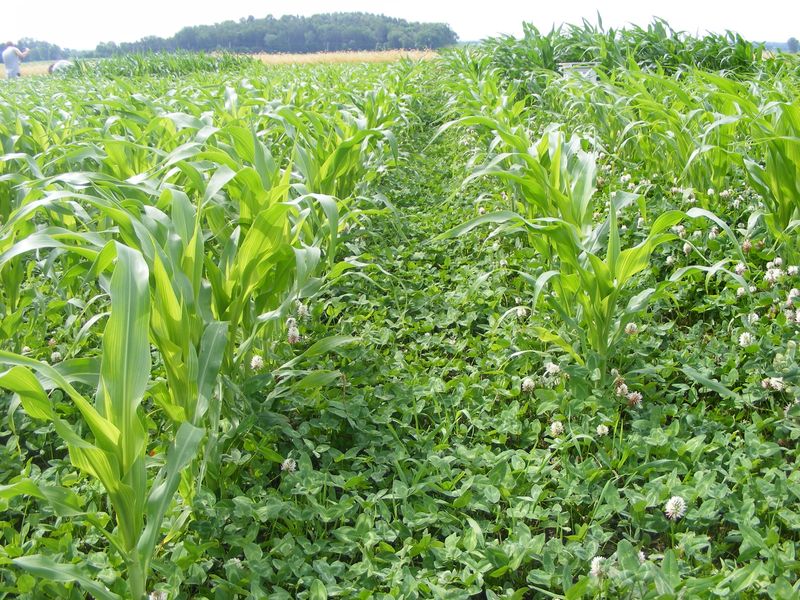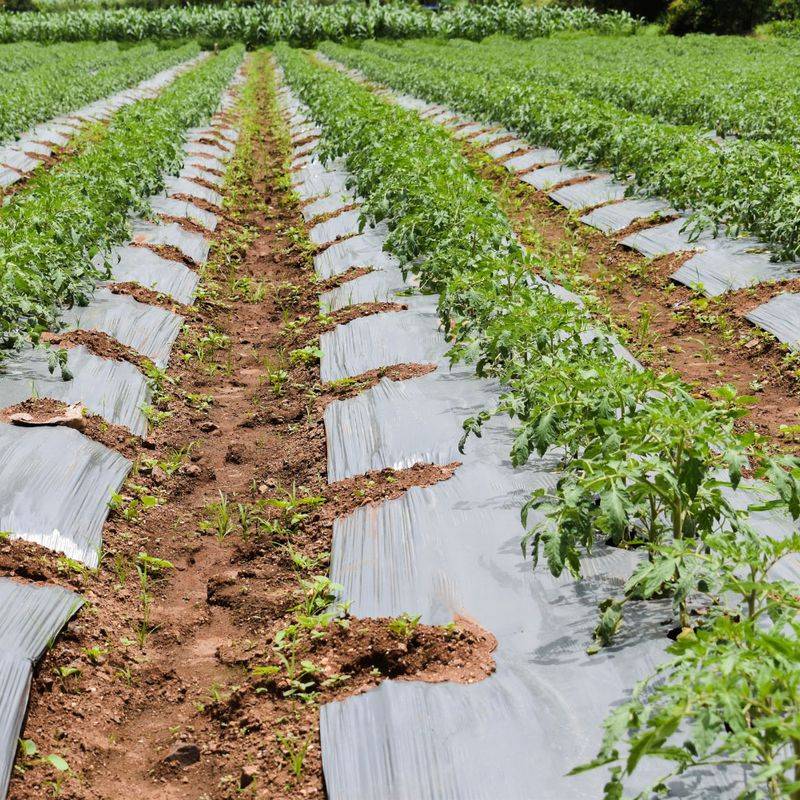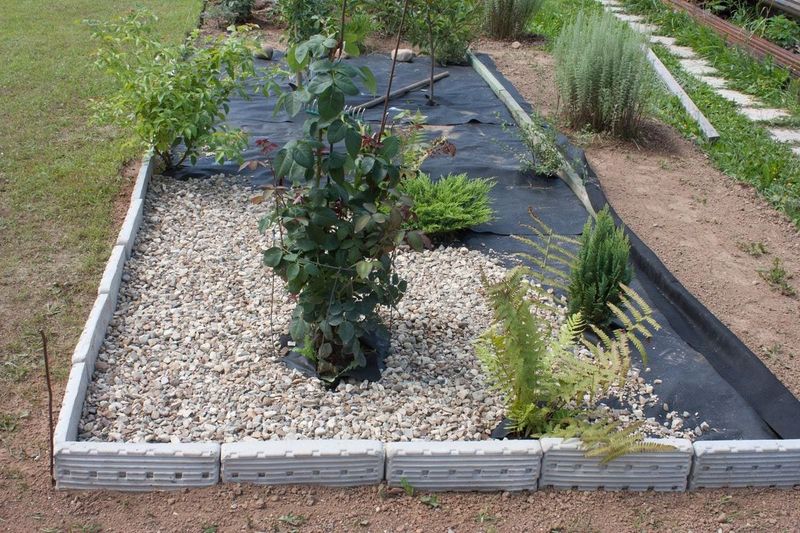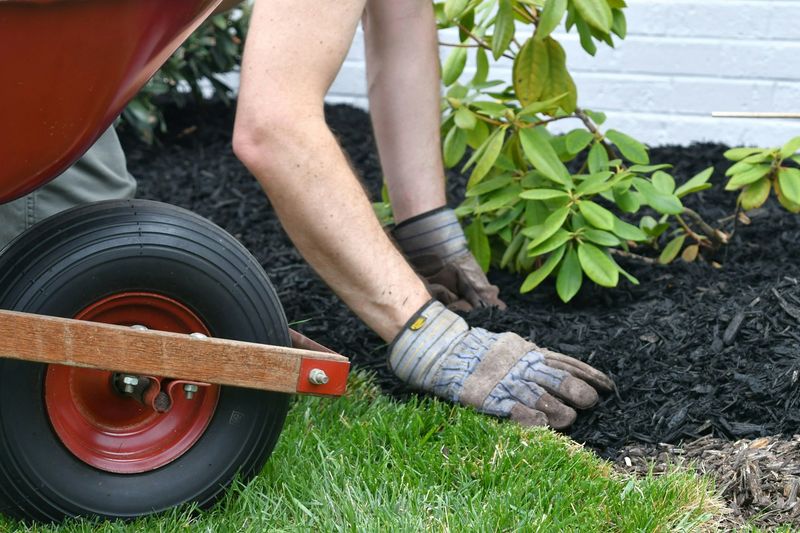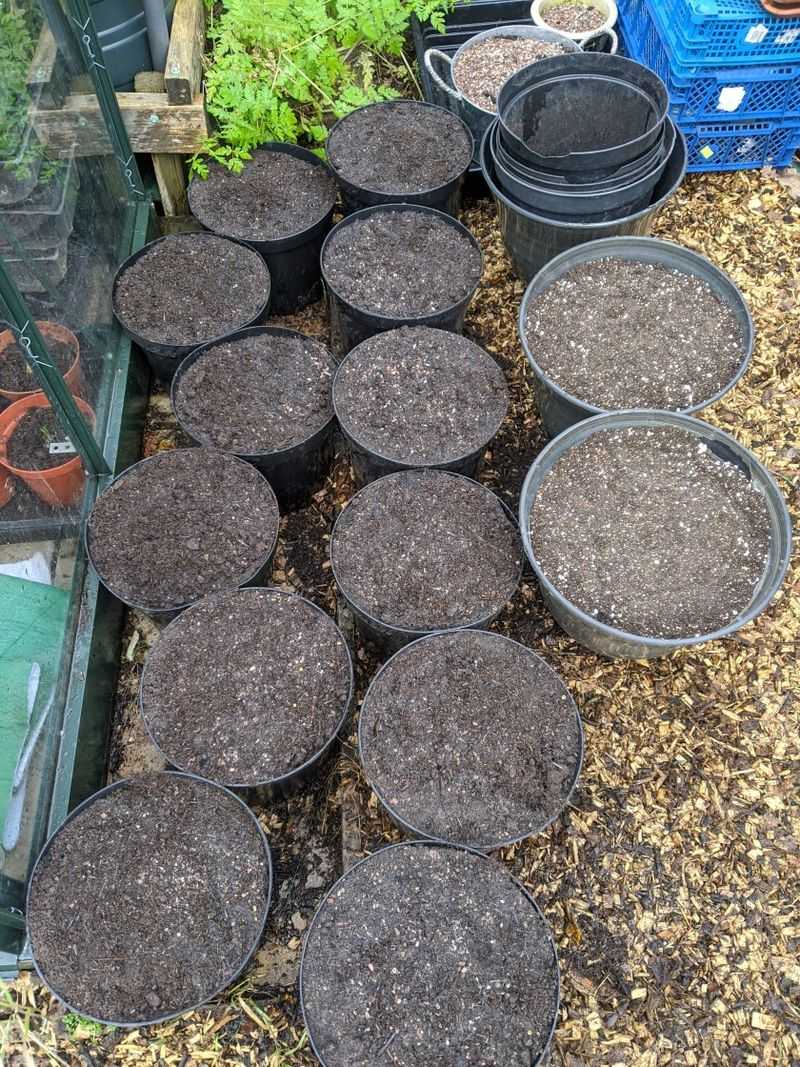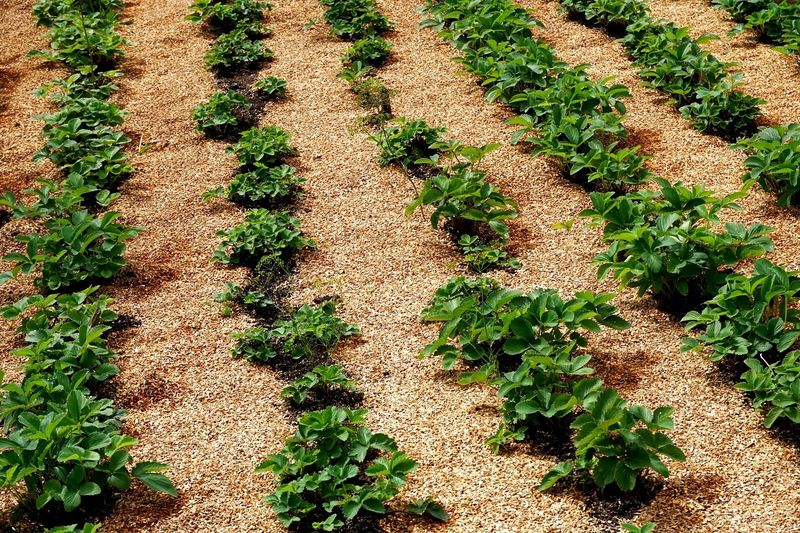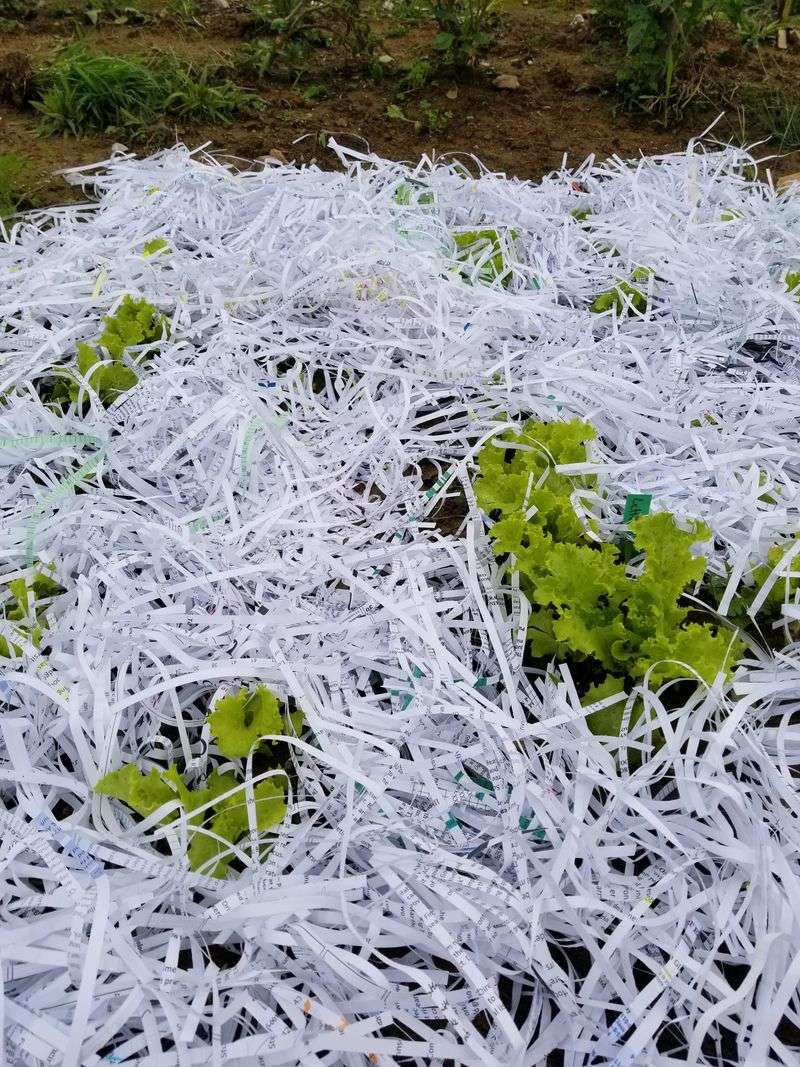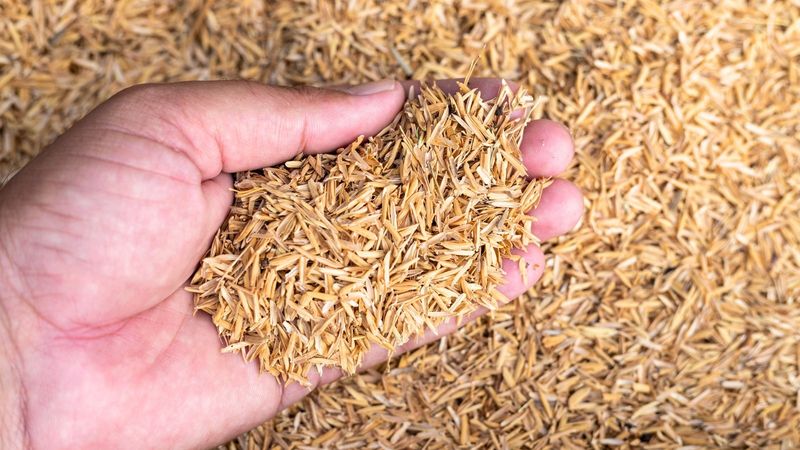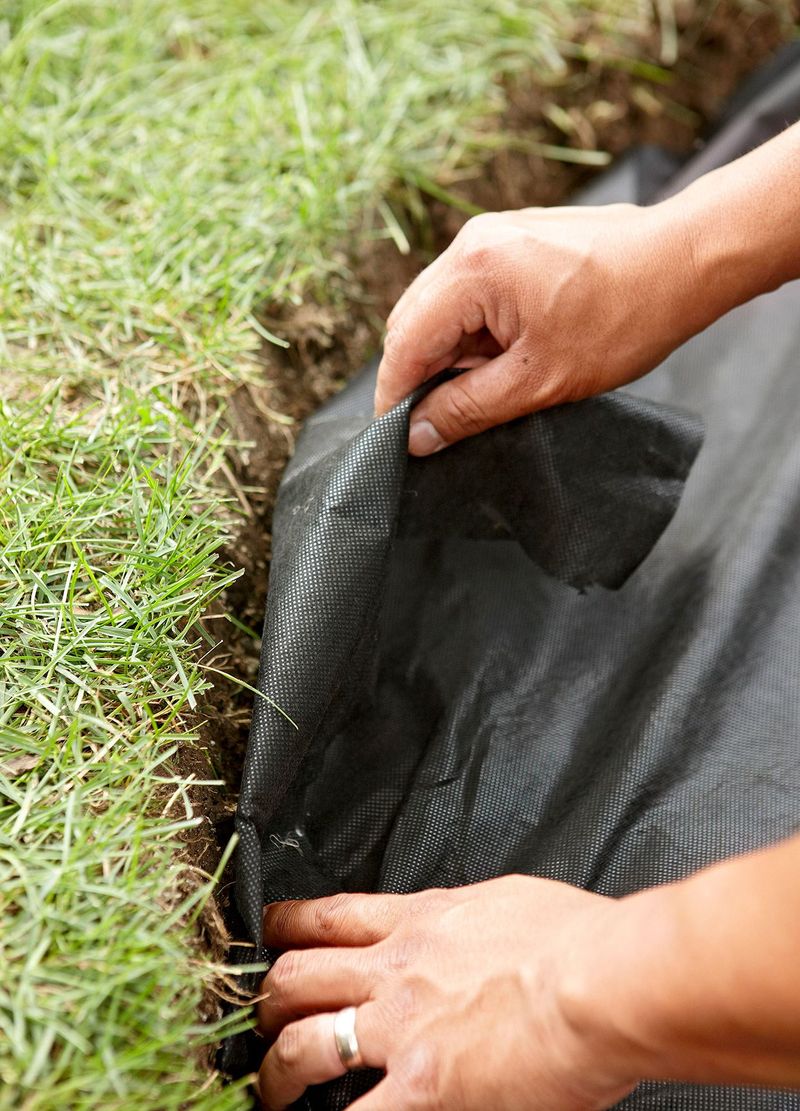Ever thought of soil as a living entity requiring care? Yes, I found out the hard way when my first garden turned into a desert scene. I needed rescue, and fast!
That’s when I discovered the magical world of mulching. There’s more to it than meets the eye. From keeping the soil moist to discouraging those weeds, mulching is THE solution to any gardener’s toolkit.
So, buckle up as we explore some of the best mulching methods that can transform your soil over time!
1. Straw Mulching
Imagine walking into a garden and hearing the crunch of straw beneath your feet. Straw mulch is not just about aesthetics; it’s a fantastic soil insulator.
The golden threads of straw keep soil temperatures steady and lock in moisture. Plus, it’s easy to apply and remove. Just remember to keep it away from plant stems to avoid rot.
Straw mulch is great for vegetable gardens and adds a rustic charm. It’s nature’s blanket, offering your plants comfort and care.
2. Wood Chips
The earthy aroma of wood chips can transform any ordinary garden into a tranquil forest escape. These chips are perfect for paths and around trees.
Wood chips slowly decompose, providing a steady release of nutrients. They also help in retaining soil moisture and suppressing weeds.
However, beware of using fresh chips as they might rob your soil of nitrogen. Opt for aged wood chips for better results and a happier garden.
3. Leaf Mulching
Who knew raking leaves could lead to a gardening treasure? Leaves, when mulched, create a fantastic, nutrient-rich cover for your soil.
They decompose rapidly, enriching the soil and inviting beneficial organisms. However, avoid thick layers to prevent matting.
Use a mower to shred leaves before application for best results. This method is budget-friendly and turns a chore into a soil-boosting technique. Leaves are nature’s way of recycling nutrients!
4. Grass Clippings
I’ve always felt a bit guilty tossing grass clippings away, so when I learned about using them as mulch, I was all in! Grass clippings are nitrogen-rich, making them perfect for my vegetable garden.
They decompose quickly and help feed the soil, which I’ve noticed has made my plants thrive. The key is applying thin layers. Trust me, you don’t want to end up with a smelly mess!
I also make sure not to use clippings from chemically treated lawns. It’s incredibly satisfying knowing I’m reducing waste and enriching my garden at the same time!
5. Pine Needles
Walking on a path cushioned by pine needles feels like strolling through a fairy tale. Pine needles, or pine straw, make excellent mulch for acid-loving plants.
They allow water to percolate while reducing soil evaporation. Use them around azaleas or blueberries for a natural match.
Their airy structure prevents compaction, providing a breathable mulch layer. Plus, pine needles decompose slowly, meaning less frequent replenishment.
6. Bark Mulch
Bark mulch is like the crown jewels of mulching materials. Its chunky texture is perfect for perennial beds and around shrubs.
It conserves moisture, reduces erosion, and adds organic matter to the soil as it breaks down. Select from pine, cedar, or other hardwood barks for different effects.
Be mindful of depth; too much might suffocate your plants. With bark mulch, your garden can achieve a polished, professional look while nurturing the soil beneath.
7. Pebble Mulch
Who said mulch has to be organic? Pebble mulch offers a sleek, modern look and is perfect for xeriscaping. It helps prevent soil erosion and reflects heat, which can be beneficial for certain plants.
Plus, it’s a long-lasting option that requires minimal maintenance. However, pebbles can raise soil temperatures, so use them carefully.
This mulch doesn’t decompose, keeping your garden tidy all year round. Pebble mulch gives you edgy styling without compromising on functionality.
8. Compost Mulch
Think of compost mulch as the ultimate soil enhancer. This mulch is rich in nutrients and promotes healthy soil flora and fauna.
It’s perfect for vegetable gardens, providing a nutrient boost while suppressing weeds. Make sure to let the compost mature to avoid burning plants.
Compost mulch is like gourmet food for your plants, improving soil structure and water retention. By recycling organic waste, you’re turning trash into treasure.
9. Coconut Coir
Ever wonder what happens to coconut husks? Coconut coir mulch is an eco-friendly option derived from coconut processing.
It’s excellent for moisture retention and helps improve soil aeration. This mulch is especially useful in container gardening.
Coconut coir is lightweight and easy to handle, but ensure it doesn’t dry out as it can become hydrophobic. It adds a tropical vibe to your garden while supporting sustainable practices.
10. Newspaper Mulching
Old newspapers are not just for reading! When used as mulch, newspaper can suppress weeds and retain soil moisture effectively. Lay down several layers and moisten them to create a solid barrier.
Cover with another mulch type for aesthetics. Ensure you use non-colored print to avoid chemical contamination.
It’s a recycling win and a gardening hack rolled into one. Newspaper mulch is cost-effective and turns yesterday’s news into today’s garden solution.
11. Cardboard Mulching
Cardboard might seem an unusual choice, yet it works wonders in weed suppression and moisture retention. Lay it flat, overlapping the edges to prevent gaps where weeds could sneak through.
Cover with organic mulch to weigh it down. It’s an excellent way to recycle and rejuvenate your soil simultaneously.
Just avoid using glossy or heavily printed boxes. This method is straightforward and wallet-friendly, turning a simple box into a protective garden layer.
12. Living Mulch
Imagine a mulch that grows! Living mulch, like clover or vetch, covers soil while fixing nitrogen and suppressing weeds.
These cover crops are perfect for interplanting with vegetables. They protect the soil and add nutrients after being tilled in.
The live foliage creates a habitat for beneficial insects, enhancing biodiversity. It’s a dynamic, eco-friendly solution that nurtures your garden continuously.
13. Plastic Mulch
Plastic mulch might not sound eco-friendly, but it’s a powerful ally in commercial farming. It warms the soil, extends growing seasons, and prevents weed growth.
Ideal for strawberries and tomatoes, it boosts yield. However, disposal can be an issue, so weight the pros and cons.
Plastic mulch offers a modern twist on traditional methods, using technology to maximize efficiency. Your farm could see significant benefits from its use.
14. Gravel Mulch
I decided to try gravel mulch in my garden for its low-maintenance appeal, and I haven’t looked back since! It’s perfect for my succulent garden, helping prevent soil erosion and giving a modern look.
While it doesn’t add nutrients to the soil, the aesthetic appeal and durability are unbeatable. Just be warned, installing gravel can be a workout, but once it’s in place, it’s worth it!
My garden has stayed pristine and well-kept, and I love how the gravel gives everything a polished vibe. Definitely a solid choice for arid climates!
15. Rubber Mulch
Rubber mulch, often seen in playgrounds, also finds a place in gardens for weed suppression and moisture retention.
It doesn’t decompose, meaning long-lasting coverage. However, it lacks the nutrient benefits of organic mulches. Use it in areas where durability is key.
This mulch recycles old tires into a gardener’s friend, reducing landfill waste. It’s a colorful, resilient option that’s ideal for specific garden spots.
16. Seaweed Mulching
For those by the coast, seaweed mulch offers nutrients from the ocean’s bounty. It contains trace minerals and breaks down quickly, enriching the soil.
Make sure to rinse off salt before use. Seaweed mulch is particularly good for sandy soils and provides a natural mulch option that connects garden and sea.
This method brings a bit of the beach to your garden with every application.
17. Sawdust Mulch
Ever thought of sawdust as more than workshop waste? In the garden, sawdust mulch provides an economic mulch option with some caveats.
It’s great for pathways and can suppress weeds, but it may deplete nitrogen. Use sparingly and with added nitrogen supplements.
For acid-loving plants, sawdust is beneficial. Its fluffy texture is ideal for certain applications, making sawdust a surprisingly versatile mulch choice.
18. Shredded Paper Mulch
Shredded paper, often seen in office recycling bins, can be repurposed as a garden mulch. It provides a barrier against weeds and retains moisture effectively.
Mix with other organic materials for best results. Use it under straw or wood chips for a layered approach. It’s a great way to recycle paper waste into something beneficial for your garden.
This method turns everyday waste into a valuable garden resource.
19. Rice Hulls
Rice hulls are an underutilized mulching resource that offer lightweight, sustainable coverage. They decompose slowly and improve soil texture over time.
Perfect for organic gardens, they are a byproduct of rice milling. Rice hulls provide a airy mulch that doesn’t compact the soil.
This method offers a sustainable recycling solution, turning agricultural waste into garden gold.
20. Landscape Fabric
Landscape fabric is the unsung hero for long-term weed control in garden beds. It allows water and nutrients to penetrate while blocking weeds. Cover with a decorative mulch for best results.
This fabric is durable and can last several years, making it a cost-effective solution. It’s a practical way to maintain a pristine garden with less effort, freeing up more time for enjoying the blooms.

